|
80x5 -
240x3 -
240x4 -
320x1 -
320x2 -
320x3 -
640x1 -
640x2
Set display option above.
Click on
images to enlarge. |
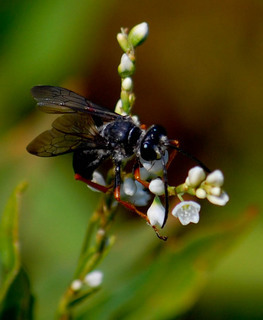
© Copyright Sheryl Pollock 2011
· 8
Podium luctuosum, Solitary Wasp |
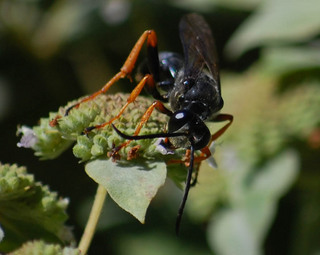
© Copyright Sheryl Pollock 2011
· 2
Sphex nudus, Katydid Wasp |
|
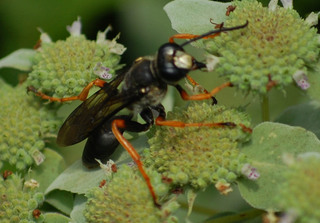
© Copyright Sheryl Pollock 2011
· 5
Sphex nudus, Spheciid Wasp |
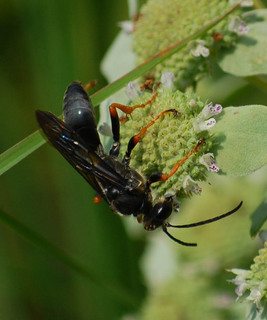
© Copyright Sheryl Pollock 2011
· 5
Sphex nudus, Spheciid Wasp |
|
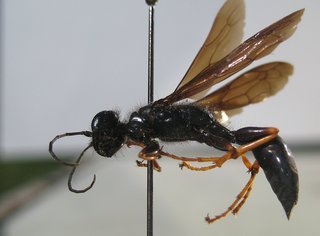
Native Bee Inventory and Monitoring Lab; Photographer: Erika Tucker · 1
Podium luctuosum, side |
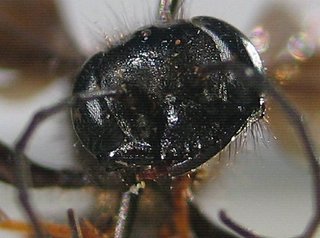
Native Bee Inventory and Monitoring Lab; Photographer: Erika Tucker · 1
Podium luctuosum, face |
|
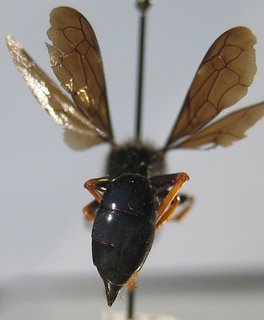
Native Bee Inventory and Monitoring Lab; Photographer: Erika Tucker · 1
Podium luctuosum, abdomen |
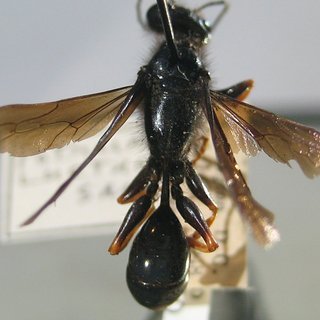
Native Bee Inventory and Monitoring Lab; Photographer: Erika Tucker · 1
Podium luctuosum, top |
|
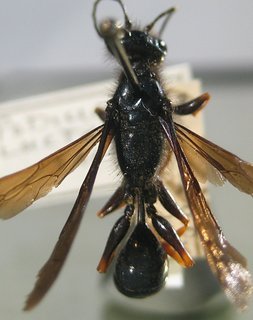
Native Bee Inventory and Monitoring Lab; Photographer: Erika Tucker · 1
Podium luctuosum, top |
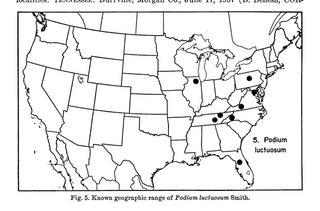
Bohart, R.M., Menke, A.S. 1963 · 0
Podium luctuosum, map |
|
Overview |
Taken from:
Bohart, R.M., Menke, A.S. 1963. A Reclassification of the Sphecinae: With a Revision of the Nearctic Species of the Tribes Sceliphronini and Sphecini.
Male.—Average length 14 mm; head, thorax, and abdomen black; femoral apex, tibia, and tarsi reddish; wings uniformly brown; erect hairs of body black; genitalia as in figure 58.
Female—Average length 21 mm.
|
|
|
Names | |
Podium luctuosum Smith
(Figs. 5, 58)
Podium luctuosum Smith, 1856, Cat. Hymen. Insects Brit. Mus., 4:235. Holotype ♀, North Carolina (BMNII).
|
|
|
Geographic distribution | |
Distribution.—We have seen one male and five females from the following
localities: TENNESSEE: Burrville, Morgan Co., June 17, 1957 (B. Benesh, COR- NELL); Grassy Cove, Cumberland Co. (UMMZ). FLoIUOA: Lake Co., March 27, 1922 (T. P. Winter, UMMZ). NORTH CAROLINA: Asheville (CORNELL). WASH
INGTON, P. C.: June 13, 1944 (M. Vogel, UCD). PENNSYLVANIA: Heckton Mills,
June 22, 1910 (W. S. Fischer, USNM). Krombein (correspondence) lists the following additional localities from specimens at the United States National Museum:
NEW YORK: Ithaca. MARYLAND: Plummers Island. VIRGINIA: Great Falls. The
distribution is plotted on figure 5.
|
|
|
Natural history | |
The closest relatives of P. luctuosum are in Central and South America.
Biology.—Pate (1949) recorded catching a female carrying a female of Parcoblatta virginica (Brunner) near Ithaca, New York. Krombein (correspondence)
has reared luctuosum from trap nests.
|
|
| Supported by | |
Updated: 2024-04-25 07:26:36 gmt
|